Premier League
'I would've fought him': Inside Roy Keane's turbulent managerial career

Find the biggest stories from across the soccer world by visiting our Top Soccer News section and subscribing to push notifications.
Warning: Story contains coarse language
Steven Caldwell vividly recalls the moment his Sunderland career effectively ended. He was grocery shopping with his wife when the phone rang. Roy Keane, the Black Cats manager, was on the line. The conversation was abrupt.
“‘I spoke to Burnley. They put an offer in for you, and you can leave,'” Caldwell, then Sunderland’s captain, remembers the combative Keane saying. “I was like, ‘What? I thought you wanted me to stay.’
“‘Well, I’ve changed my mind. I want you to go.'”
Just two days prior, a tense meeting between the pair ended with Keane telling his skipper, an impending free agent, that he’d sort out a new contract to keep him at the club. Volatility, Caldwell told theScore, was commonplace with Keane.
The Manchester United legend’s appointment surprised some Sunderland players to begin with that season. In his first job as a manager, he was entrusted with a side that opened the 2006-07 campaign with five consecutive defeats following a historically poor relegation from the Premier League.
But the club hadn’t just placed its trust in any rookie boss. Keane was notoriously feisty on and off the pitch. Niall Quinn, the Sunderland chairman and icon overseeing the team until he hired Keane, witnessed the latter’s infamous, searing rant at Republic of Ireland boss Mick McCarthy ahead of the 2002 World Cup. Quinn, one of the senior Irish players at the time, supported McCarthy in the rift, which ended with Keane sensationally leaving the squad prior to the tournament.
“Quinny doesn’t suffer fools gladly, but he’s not volatile. He’s totally measured and controlled. Roy’s also smart, but not measured and controlled,” Caldwell said.
The public spat, which stemmed from Ireland’s supposedly poor World Cup preparations, was perhaps the biggest controversy of Keane’s storied playing career. Ireland and the rest of the British Isles were gripped by the soap opera that unfolded. The “Saipan incident,” as it was dubbed, has its own dedicated Wikipedia page.

That wasn’t all, of course. There was also Keane’s infamous challenge on Manchester City’s Alfie Haaland – father of Erling Haaland – that led to the midfielder’s early retirement. He flung his elbows, stomped on genitals, and grappled with opponents and teammates. His legendary spell of over 12 seasons with Manchester United ended abruptly due to his faltering relationship with manager Alex Ferguson.
“He wasn’t bothered about upsetting people,” Tommy Miller, who worked under Keane at Sunderland and Ipswich Town, said. “That’s how he played as well. He’ll tell you himself: There’s no friends in football. I don’t think he had many friends.”
‘Our best player was the manager’
Sunderland followed four straight losses to begin the 2006-07 Championship season with an embarrassing League Cup elimination at Bury, who were sitting dead last in the fourth tier of English football.
After that harrowing defeat, a visibly emotional Quinn revealed a managerial appointment was imminent. Grudges were going to be set aside.
“Let’s be honest, it worked,” Miller said.
Keane’s arrival revitalized a squad that had been drained of confidence. He met the players during a Sunday training session and watched from the stands the next day as Sunderland beat promotion candidates West Bromwich Albion. Even Quinn, in his last appearance as a manager, couldn’t hide his amazement.
“People thought we were going to get spanked again today,” he said.
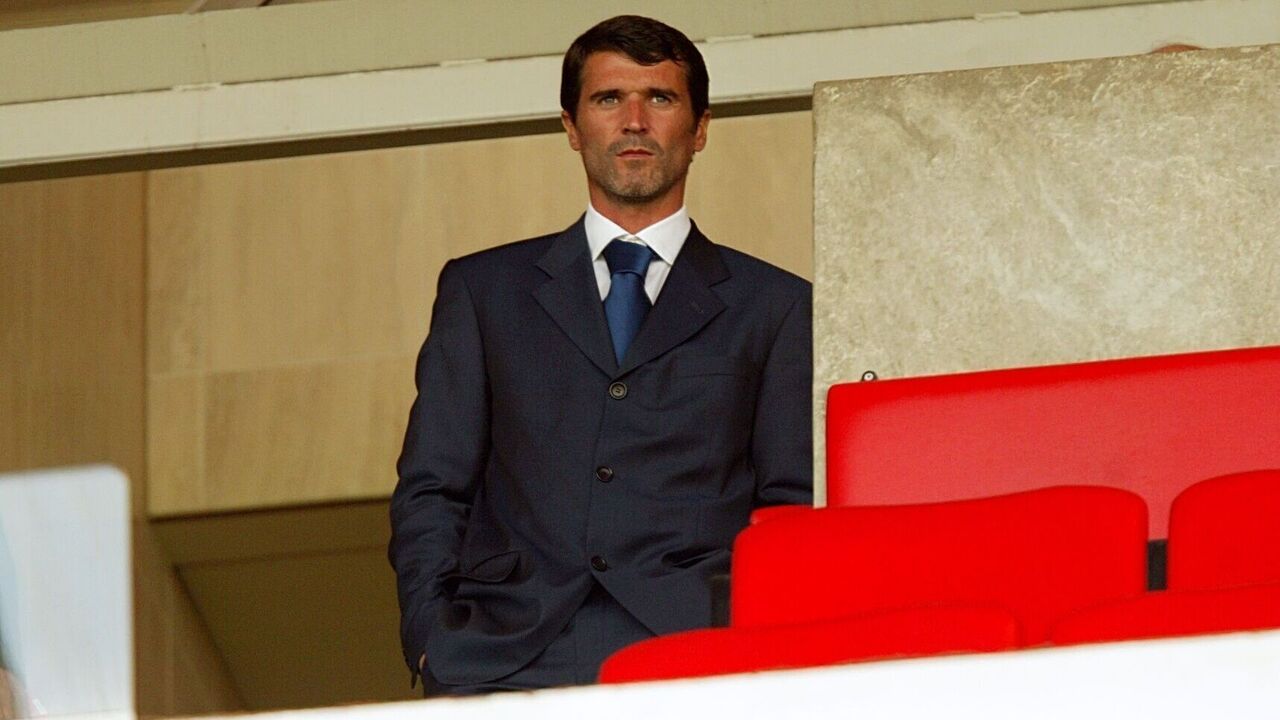
Keane wasn’t afraid to make changes despite the much-needed victory. He dropped five players from the starting lineup for his first official game as Sunderland boss, a trip to Billy Davies’ Derby County, and hailed the team’s character after a 2-1 comeback win. Although the Black Cats collected all three points, defender Neill Collins – who scored in the win over West Brom – wanted to know why he was demoted from starter to unused substitute against Derby. The center-back, who had recently turned 23, thinks he was the first player to initiate a one-on-one meeting with his new boss.
“People always fear the worst with Roy Keane – but he was excellent,” Collins recalled.
Collins, who’s now in charge of Barnsley, was impressed with Keane’s man management. Keane told the young Scot to be patient and insisted he was part of his plans. The manager then gave Collins a full 90-minute shift for Sunderland’s next outing, deploying him at right-back for the first time in his career in a 3-0 win at Leeds United.
Training became more intense. Assistant manager Tony Loughlan covered most of the sessions while Keane, perhaps taking inspiration from Manchester United’s Ferguson, would observe from afar or arrive later in the day. He had high standards and would occasionally step in with directives and demands. He wanted high-tempo, attacking football. He urged his players to take only one or two touches. He fired the ball at their feet during rondos.
Keane was 35 and suffered some injury issues during his playing days – but his quality on the ball hadn’t deserted him. Far from it.
“It was maybe the first three weeks he hadn’t joined in at all, but he joined in a game, and I think his team won 3-0 and he scored all three. It was incredible,” Collins said.
“Our best player was the manager,” he added.
Quinn and the rest of the boardroom were willing to back Keane in the transfer market, allowing him to retool his roster before officially taking charge. Sunderland signed six players on the last day of the summer transfer window alone, and only one – Keane’s former Manchester United teammate Dwight Yorke, who had just flown across the world to join from Australia’s Sydney FC – didn’t start against Derby.
“He had whatever he needed that first season,” Caldwell said.
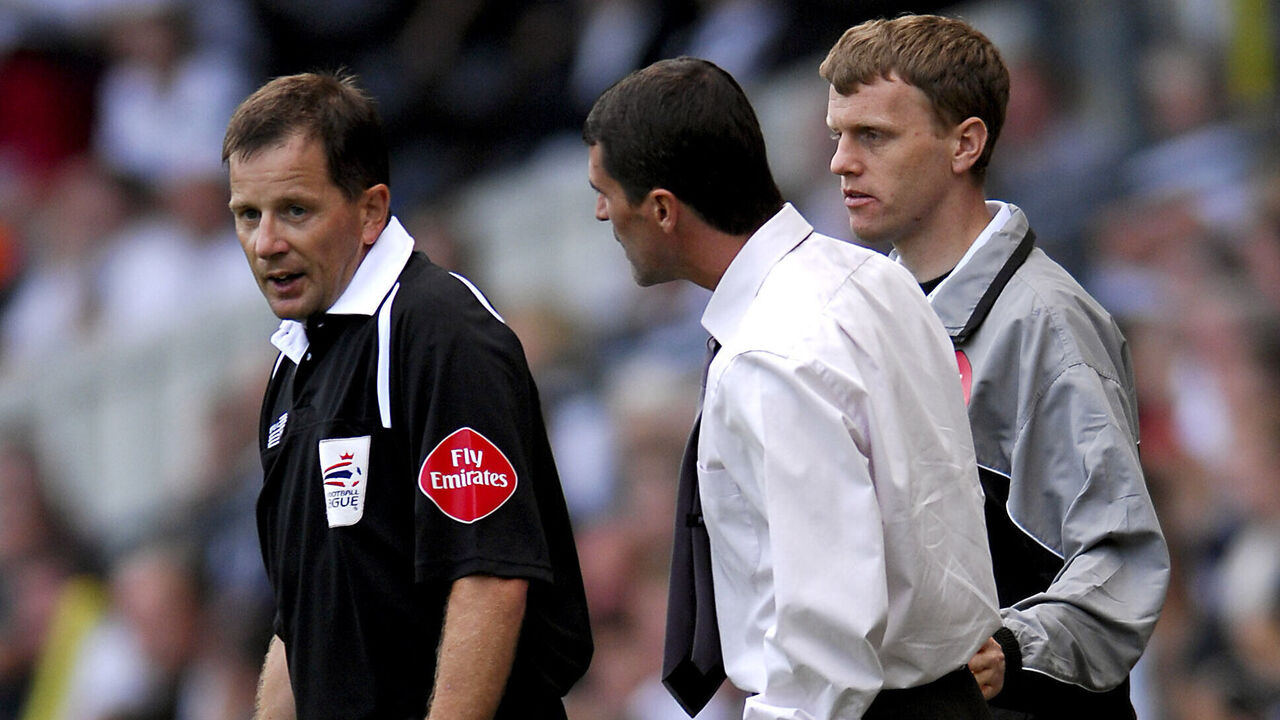
theScore’s attempts to contact Keane through agents who look after his commercial interests and public speaking engagements were unsuccessful.
Out of favor
Players Quinn signed earlier in the summer, like Clive Clarke and Arnau Riera, soon disappeared from view as Keane brought in his own personnel. Remnants from the previous regime – headed by Keane’s old rival McCarthy – were even more vulnerable.
Miller was proven in the Championship, notching 11 and 13 goals from midfield over his previous two second-tier seasons. He was also desperate to perform for Sunderland, the team he regularly watched with his dad and supports to this day.
“I was doing everything right,” he said. “I was training well. I was doing well for the reserves. In in-house practice games, I was scoring goals.”
But Keane wasn’t convinced.
Miller, who was injured when Keane arrived, was sent on a short-term loan to fellow Championship side Preston North End in November 2006 and was strangely eligible to face Sunderland at the end of December.
That dubious decision – or oversight – backfired. Preston dealt Sunderland their second defeat in three matches to finish in second place at the season’s halfway point and leave Keane’s men 10 points below the automatic promotion positions. Miller played the whole match.
His frustration at not being given an opportunity under Keane made it easier to offset his loyalties toward Sunderland.
“Because of Roy Keane, I just thought, ‘Yeah, fuck you.'”
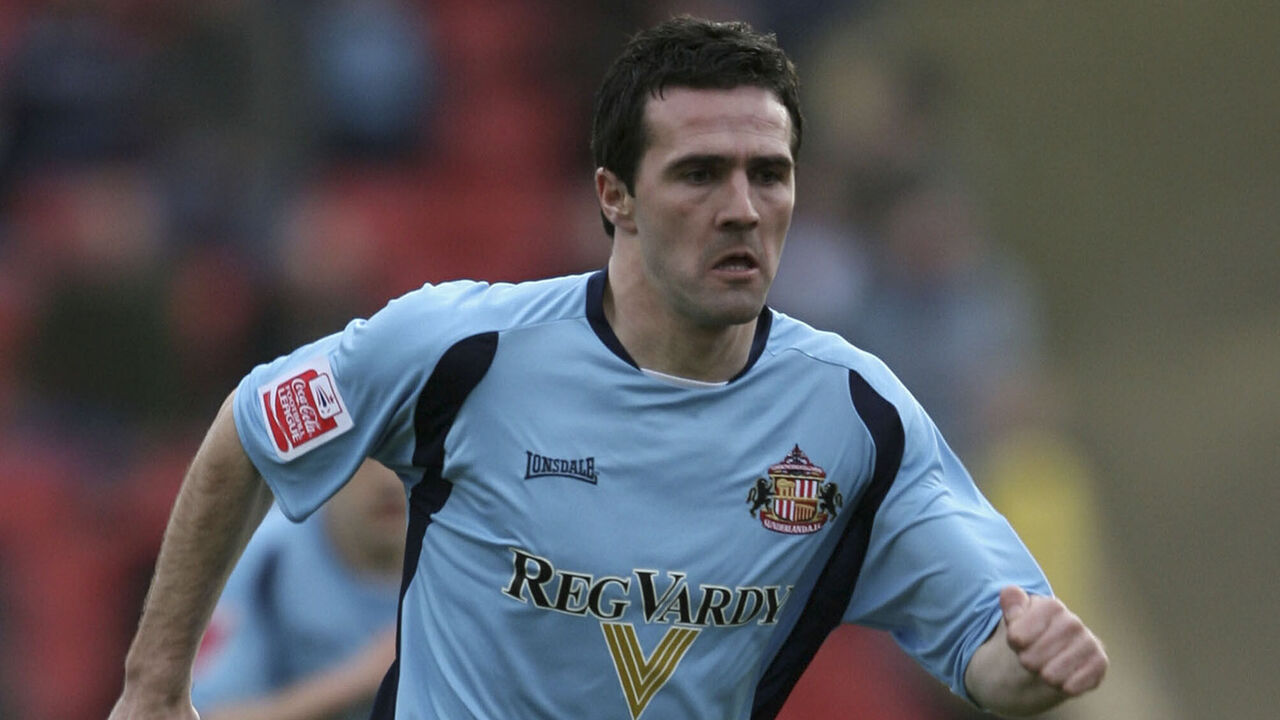
Miller returned to Sunderland in January and made his only appearance for Keane as a substitute the following month. He suspects his opportunity only materialized because Keane instructed the team bus to leave without three players who were running late.
Caldwell wasn’t frozen out in the same way. An injury sidelined him during the start of Keane’s tenure, but he was soon thrust into the starting lineup when he was fit. He remained captain.
That’s what made Keane’s U-turn, when he blindsided Caldwell at the grocery store, more perplexing.
Even after a positive few hours touring Burnley’s facilities, Caldwell wanted to fight for his place at Sunderland. But Keane wouldn’t change his mind again. He called Caldwell into his office to question why he’d not accepted a “great offer” from Burnley. That irritated Caldwell – he and his family would judge the quality of the offer – and he was soon pushed to breaking point when Keane told him he’d strip him of the captaincy because he wanted players who were “up and at it.”
“He’s probably the only guy in 18 years as a professional – player, coach, anyone – that’s ever questioned my attitude. Ever,” Caldwell said.
“I swear to God, I would’ve fought him in that room if he stood up, if he was ready for it. I was so angry.”
Caldwell thinks there were around 10 minutes left in the January transfer window when he joined Burnley.
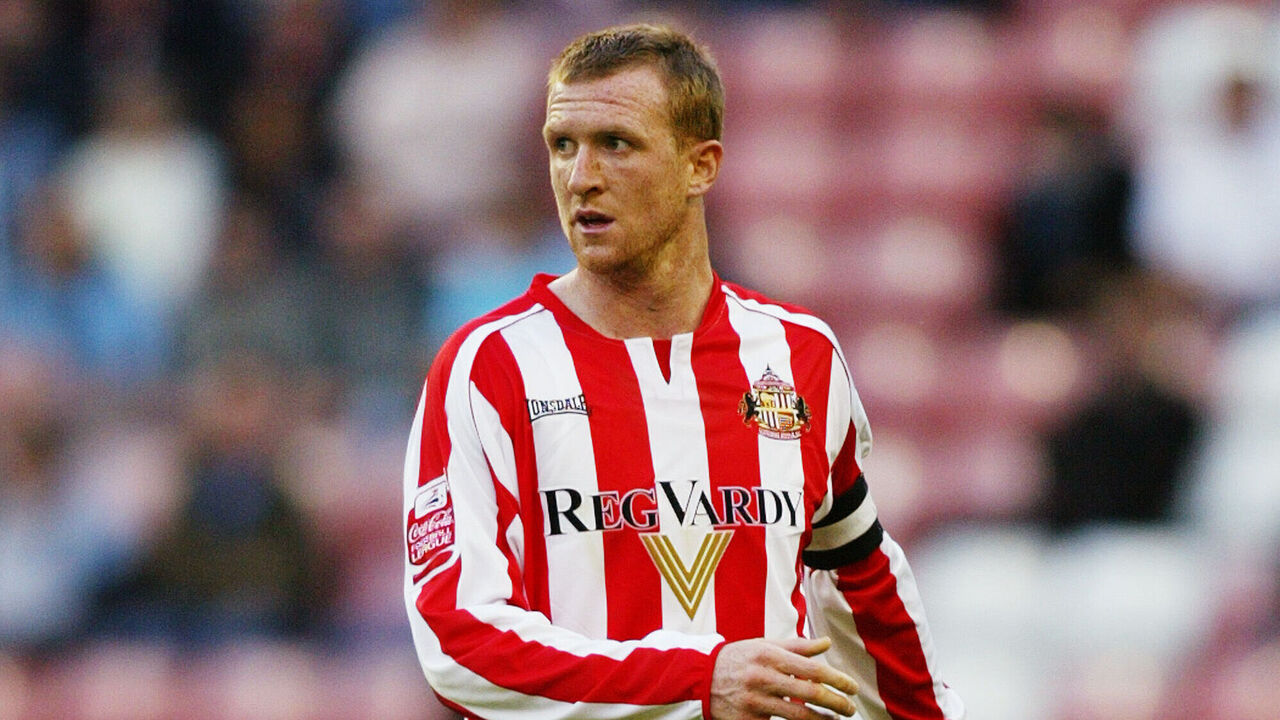
Despite upsetting players with his squad overhaul, Keane got Sunderland promoted as champions. It was an incredible feat considering the mood in the camp and team’s position in the table when he took over, but was it primarily recruitment, rather than Keane’s management, that sparked their return to the Premier League? Their spending outstripped most of their Championship rivals, and it didn’t slow after promotion – but Keane’s Sunderland struggled to stay afloat in the ultra-competitive Premier League.
They avoided relegation by three points in their first season back in the top flight. When Keane left by mutual consent in December 2008, Sunderland were 18th after five defeats in six matches. They’d splurged almost £70 million on 33 players during Keane’s 27-month reign.
Quinn praised Keane effusively when he departed.
“He was instrumental in developing a winning mentality – that was the toughest thing of all for him to come and do when we were at the foot of the Championship,” Quinn explained. “He brought standards to this club which are amazing.”
Playing with fear
Keane wasn’t out of the game for long.
Twenty weeks later he embarked on a similarly ambitious project at Ipswich Town. Keane had the luxury of assessing his squad over the final two matches of the Championship campaign before truly kickstarting the Tractor Boys’ bid to return to the Premier League over the summer.
“We went to an army camp. We had to survive three days in the woods,” Pim Balkestein, then 22, said of the team’s rigorous preseason getaway ahead of the 2009-10 campaign.

Balkestein remembered Keane joining the drills and appearing to enjoy them. Explosive, gun-like sounds would startle the squad awake in the early hours, signaling another grueling day in the wilderness. Balkestein believes the exercises helped them “grow together as a group,” but that wasn’t evident when the season got underway.
Keane’s Ipswich started in miserable form, recording eight draws and six defeats before finally winning their first match on the final day of October. Balkestein was taken aback by Keane’s ferocity in the Ipswich dressing room during that run. Objects would fly. He would scream. The youngster said the “really nice guy during the week” could switch in an instant.
“When you play a shit ball, he’ll really say, ‘You’re a fucking wanker, why (did) you play this shit ball?’ You have to cope with it,” Balkestein said.
Owen Garvan, who was substituted 23 minutes into a match at Watford after making an error, said people “stayed clear” of Keane to avoid his outbursts.
“Your confidence levels are going lower. You’re scared to make mistakes,” Balkestein, who was soon shipped to Brentford, recalled of his mental condition. “You’re thinking about what Roy Keane’s thinking, and that’s not the state of mind you need to have on the pitch.”
Balkestein suggests Keane’s inability to adapt to different personality types harmed his tenure in Suffolk. Ipswich finished 15th at the end of Keane’s first full campaign, closer in points to the relegation zone than the playoff places. He was sacked midway through the following season, with Ipswich writhing in 19th place.

“I tracked some players, and I think from that squad, 10 players reached Premier League clubs, so there was a good squad,” Balkestein said. “Maybe he didn’t bring it together.”
Keane hasn’t overseen a team since.
He was assistant manager of Ireland from 2013-18 and was briefly on the coaching staff at Aston Villa in 2014 and then Nottingham Forest five years later. There’s been nothing after that.
Caldwell believes one of his former boss’ greatest hurdles to managerial success was separating “Keano” the aggressive midfield star from Keane the gaffer. He had a reputation to live up to as a no-nonsense, outspoken character, and his scathing dressing-room addresses and ruthless discarding of players satisfied that role.
And as a pundit with a delivery that’s blunt, savage, and often the key ingredient for viral videos of Premier League analysis, he could still be trying to play a part.
“The reason he’s great on the telly is actually what you saw in management. I think he started to become a caricature of himself,” Caldwell said.
“He’s good value on TV, but it’s all a big act.”
Copyright © 2023 Score Media Ventures Inc. All rights reserved. Certain content reproduced under license.
You may like
Premier League
Breaking down thrilling EPL title race with 10 games left

Find the biggest stories from across the soccer world by visiting our Top Soccer News section and subscribing to push notifications.
One of the most intoxicating title races in Premier League history is, mercifully, ready to resume.
The quirks of the calendar – an FA Cup weekend succeeded by an agonizing international window – means the titanic tussle between Arsenal, Liverpool, and Manchester City will have been on hiatus for a full three weeks before it gets back underway on Sunday.
But there are no more impending interruptions. With 10 matches remaining for each title contender, we’re barreling toward a resolution to the type of three-way battle that’s exceedingly rare in England’s top flight. There’s never been a season in the Premier League era where three teams went into the final day with a chance to hoist the trophy. This could be it. The last time it happened was the 1971-72 campaign, when Derby County won an incredible four-team fight, narrowly beating Leeds United and, ominously, Liverpool and Man City to the crown. We’re overdue for that kind of drama.
That three sides have converged this way at all is, frankly, remarkable.
These are the three best teams in the country by an enormous margin. They’re the only ones with an expected goal difference per game of plus-1.0 or greater this season. The next best mark, surprisingly, belongs to Mauricio Pochettino’s erratic Chelsea team at plus-0.36. So, yeah, it’s not close.
The three of them are also on a tear and show no signs of slowing down. Arsenal have won all eight of their league games in 2024, scoring 33 goals in the process; Liverpool have collected 22 of a possible 27 points in that time; reigning champions Manchester City have racked up 23 of 27 points. They’ve combined for just one loss since the calendar flipped – Liverpool’s 3-1 defeat against Arsenal in early February.
The only sides that look capable of halting their progress are each other, which makes this weekend’s clash between Manchester City and Arsenal at the Etihad all the more significant.
Each contender has a compelling reason for believing it’s “their” year.
Arsenal
Mikel Arteta’s men look far more assured and mature than last season when they set the pace for nearly the entire campaign, only to crumble down the stretch and relinquish their once sizeable advantage to Manchester City. Do-it-all superstar Declan Rice has been a transformative figure in midfield, while Kai Havertz, after an inauspicious start, is becoming an increasingly vital and consistent scoring threat. At least from the outside, there appears to be more self-belief within the Arsenal camp. Having learned from their experience in 2022-23, Arsenal won’t cede top spot so easily this time. It’ll need to be ripped from them.
Some may be inclined to dismiss their recent run because of their opponents. Yes, the Gunners have played some weak teams – Sheffield United! Burnley! Nottingham Forest! – but, for the most part, they aren’t just beating them; they’re blowing them away with a ruthlessness usually associated with title winners. For those still unconvinced, Sunday’s visit to the Etihad, where they were tossed aside like a rag doll in last season’s 4-1 loss, will be the ultimate litmus test to see if this team is ready to end the club’s 20-year title drought.
Liverpool
Jurgen Klopp’s persistent squad, already with the League Cup in tow, aims to send off their departing bench boss in style. Liverpool have been the most entertaining team of the trio this season. They create more chances than Arsenal and City and concede more opportunities. Darwin Nunez, the ultimate agent of chaos on a football pitch, is the perfect fit for a team with a habit of scoring late goals and delivering dramatic moments. Their title charge is built on more than just vibes, though.
Liverpool overwhelmed none other than City in their last league game before the international break but came away from the pulsating affair at Anfield with a 1-1 draw. City, usually self-confident and domineering in possession, simply held on against what Pep Guardiola dubbed a “tsunami” of pressure. There was obviously some added incentive at play, but Liverpool are built to go full speed regardless of the opposition. It’s in their nature under Klopp.
Manchester City
Despite not being at its vintage best this term, Guardiola’s accomplished crew remains the favorite in the eyes of many who, for good reason, simply refuse to pick against them. We’ve been conditioned to feel like City will inevitably be the last team standing because, well, they usually are. Five titles in the previous six seasons will have that effect on the collective psyche. However, Erling Haaland isn’t replicating his ferocious scoring pace from last season, and Kevin De Bruyne has been limited to six league starts. Also, outside of some electrifying Jeremy Doku performances, the summer signings haven’t exactly set the world alight. And yet, here they are, just one point off the top, showing the quiet confidence and tranquility that can only be obtained through winning experiences.
With Phil Foden leading the way and authoring arguably the best season of anyone in the league, City could become the first team in English history to win four consecutive top-flight titles.
Strength of schedule
On paper, Arsenal have the most difficult fixture list.
Their remaining opponents average 41.8 points this season, roughly corresponding to ninth place in the table. Put another way, it would be the equivalent of playing Wolves (41 points) or Brighton (42) each week. It doesn’t help that many of Arsenal’s toughest matches are away from home. Coincidentally, they have upcoming trips to Brighton and Wolves, along with north London rivals Tottenham and Manchester United, following this weekend’s potentially decisive tilt at the Etihad. It’s tough.
Manchester City’s task is slightly more forgiving, as their remaining opponents average 40.7 points or 10th place.
Liverpool appear to have the most favorable schedule of the trophy chasers, with their opponents averaging 38.4 points, a tally representing the haul of a team in the bottom half of the table. While that’s better than the alternative, it’s not quite so simple for the Reds. On the back of a potentially draining Europa League quarterfinal second leg against Atalanta in mid-April – more on that soon – Klopp’s men have three away games in seven days against Fulham, Everton, and West Ham. In addition to battling their local nemesis, who could still be scrapping for survival at that point, Liverpool will also face a rambunctious Goodison crowd that would love nothing more than to play a critical role in stopping their hated rivals from winning another league crown.
Aston Villa and Spurs, meanwhile, stand out as common foes for all three title hopefuls. Sitting fourth and fifth, respectively, and engaged in their own fight to secure a Champions League place, they could play the role of kingmakers this spring.
European commitments

Balancing the mental and physical demands of domestic play with continental competition is a huge piece of this puzzle for all three teams. Midweek success can further galvanize a group, but taxing failures can cripple a team’s momentum at home.
Much like the domestic schedule, Liverpool seem to have an edge here. Arsenal and Manchester City will face European behemoths Bayern Munich and Real Madrid in a pair of mouthwatering Champions League quarterfinal ties beginning next month. However, Liverpool have a comparatively charitable Europa League encounter with Atalanta.
If they both advance, Arsenal and City will meet in the Champions League semifinals, an outcome that will surely be celebrated wildly on Merseyside.
How those games intermingle with the league schedule also matters. Liverpool play Crystal Palace and Fulham following their two matchups with the Italian outfit. After locking horns with Bayern, Arsenal have to contend with Aston Villa and Wolves. Manchester City, still active on three fronts as they seek a second consecutive treble, host lowly Luton after the first leg of their Real Madrid rematch and take on Chelsea in the FA Cup semifinals following the second leg.
Injury concerns
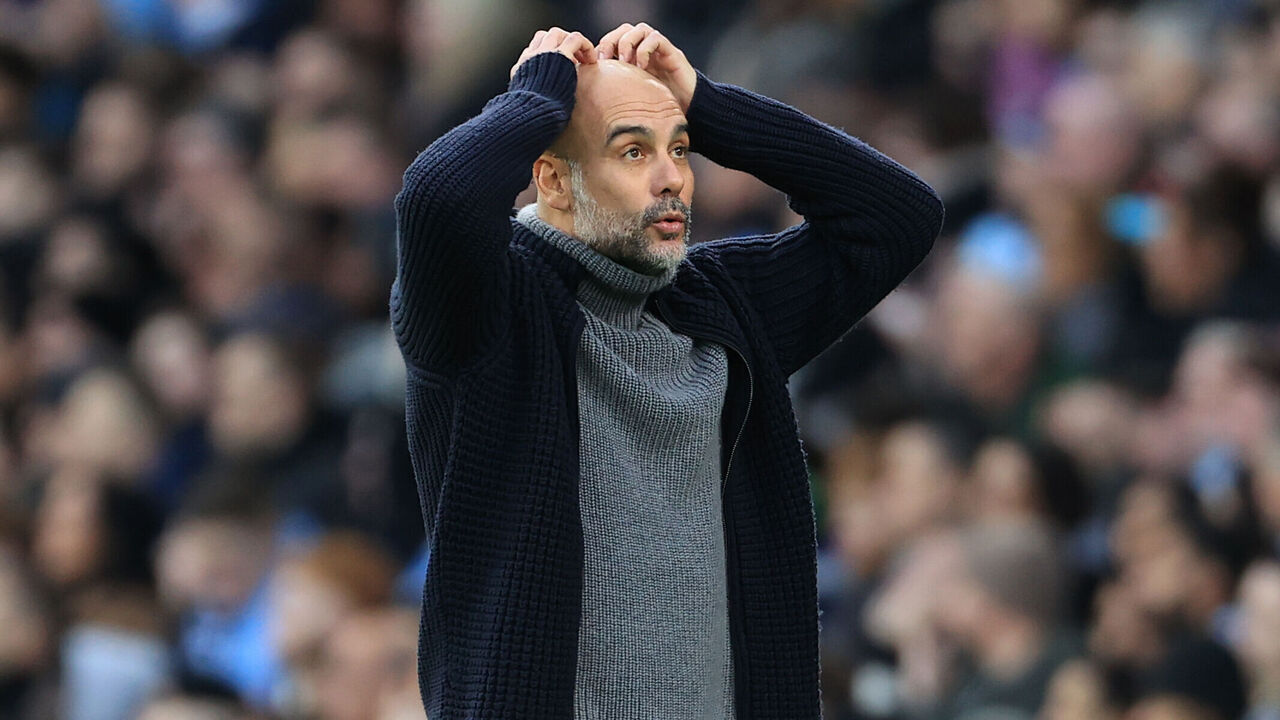
Liverpool have been plagued by injuries all season. Mohamed Salah, Trent Alexander-Arnold, Darwin Nunez, Diogo Jota, and Andy Robertson, among others, have missed varying amounts of time, though the bulk of that group is getting back to full fitness. Alisson Becker remains sidelined and might not return until mid-April. Defensive stalwart Virgil van Dijk is the only Liverpool player to garner over 2,000 league minutes this season, indicating how disruptive injuries have been for Klopp’s team. And yet, they persevere.
Five Manchester City players have cleared the 2,000-minute mark thus far, and a couple more are on the cusp. But the club was without De Bruyne for the entire first half of the season, while trips to the treatment room ravaged Jack Grealish’s year. City also got hit the hardest by the recent international break, with John Stones and Kyle Walker hurt on England duty and racing against time to recover for Sunday’s match versus Arsenal. Swiss defender Manuel Akanji is in the same boat, and Ederson’s return date from a thigh injury remains uncertain. Never shy about tweaking his lineup, Guardiola could be forced to tinker yet again.
Arsenal have been largely unscathed, with six players eclipsing 2,000 league minutes. William Saliba, whose absence last season played an outsize role in Arsenal’s capitulation, has been on the pitch for every second of league play in 2023-24. Gabriel Jesus has battled ailments all year, and Jurrien Timber suffered an ACL injury just 49 minutes into his Premier League debut in the season opener. But the Gunners will be hoping their relative good fortune on the injury front extends right through May, especially as it relates to Bukayo Saka, who pulled out of the England squad to nurse a minor muscular issue.
Prediction
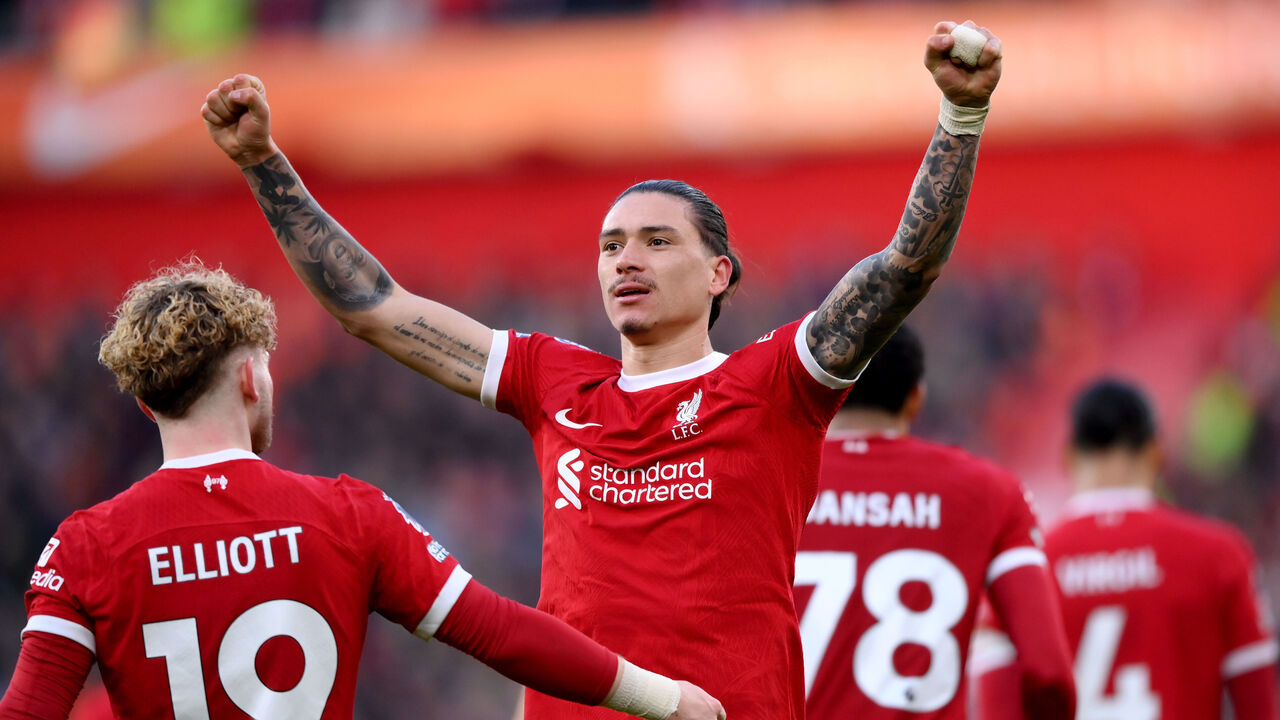
First, a disclaimer: Luck will play a pivotal role in determining which team is crowned on May 19. Injuries will continue to be a factor. There will almost certainly be contentious refereeing and VAR decisions that favor and oppose the title challengers. There will also be finishing variance, with players missing seemingly easy chances and converting more difficult opportunities.
Impossible to predict? No matter. We’re not going to let that stop us.
Considering their advantageous schedule, at home and in Europe, along with their improving squad health at just the right time and the inescapable feeling that this is a team of destiny determined to send their beloved manager out on a high, we’re going with Liverpool, who’ll collect 88 points to pip their rivals and again interrupt Manchester City’s run of domestic dominance.
Copyright © 2024 Score Media Ventures Inc. All rights reserved. Certain content reproduced under license.
Premier League
Euro 2024 playoffs: Miraculous Ukraine comeback, big result for Wales

Find the biggest stories from across the soccer world by visiting our Top Soccer News section and subscribing to push notifications.
Wales, Greece, and Poland registered statement wins Thursday, joining three other teams in next Tuesday’s playoff finals for the three remaining places at Euro 2024.
Ukraine staged an incredible late comeback against Bosnia and Herzegovina in its semifinal to keep its Euro dream alive.
The highest-placed team in FIFA’s rankings that’s no longer in contention to reach the tournament in Germany is 60th-placed Finland.
Here’s how the playoff semifinals across Path A, B, and C played out.
Path A

Poland 5-1 Estonia
Estonia barely stood a chance. Down to 10 men as early as the 27th minute, the northern Europeans could only muster a consolation goal in a 5-1 loss to Poland. The Polish achieved the rout without Robert Lewandowski getting on the scoresheet and remain unbeaten in 21 Euro qualifiers at home, a magnificent run dating back to September 2006. Poland is trying to make up for a poor qualifying campaign in which it finished third in Group E, four points behind the Czech Republic and Albania. The country hasn’t missed the Euros since 2004.
Wales 4-1 Finland
The Red Wall might descend on Germany this summer. Wales’ raucous supporters have legitimate hopes of traveling to another major tournament after the Dragons scorched Finland without the retired Gareth Bale and with Aaron Ramsey, 33, on the bench after more injury problems. Teemu Pukki gave the visiting team some hope just before halftime following well-taken finishes from David Brooks and Neco Williams. But Wales needed just 73 seconds of the second period to restore its two-goal cushion via Brennan Johnson’s tap-in. Daniel James took advantage of a defensive error before rounding the goalkeeper in the 86th minute to give the host a resounding victory.
Playoff final: Wales vs. Poland, Tuesday 3:45 p.m. ET
Path B
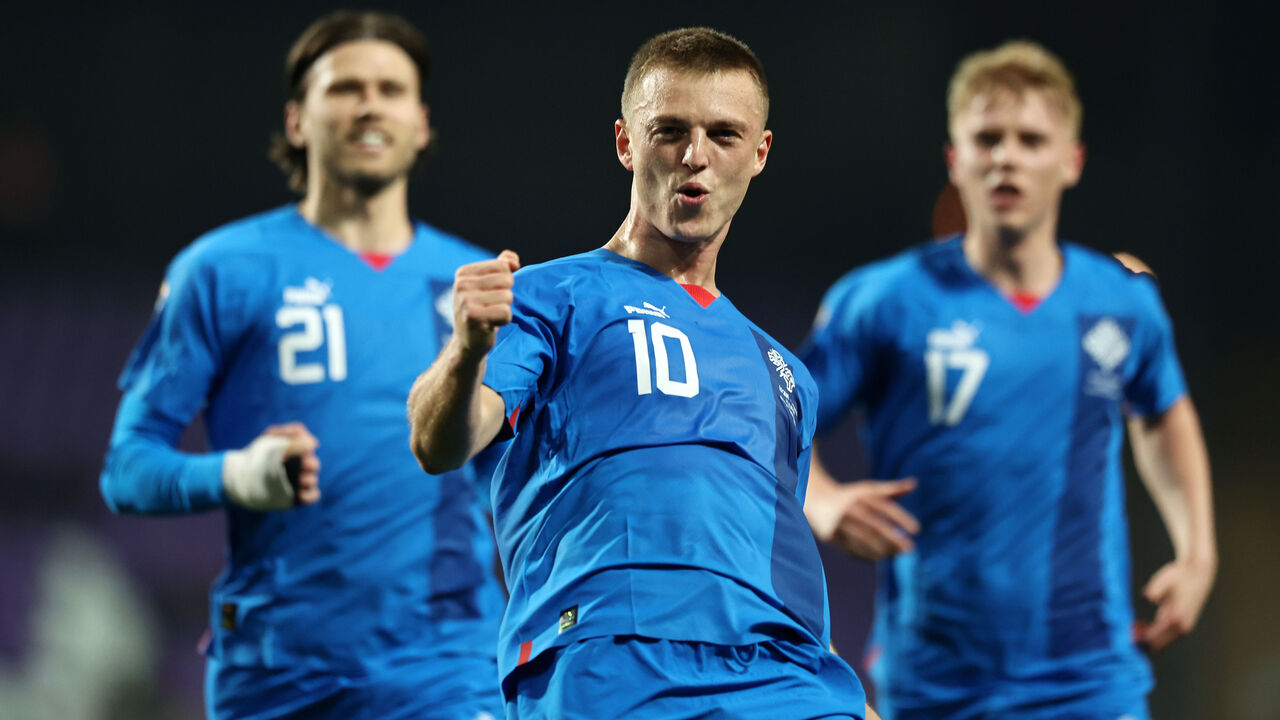
Israel 1-4 Iceland
Iceland’s Albert Gudmundsson stole the show with an emphatic hat-trick against Israel on Thursday. His stunning free-kick into the top right corner canceled out Eran Zahavi’s opening goal for Israel, and he created a nice cushion for his country with a pair of markers in the final 10 minutes. Just before that, Zahavi blew an incredible opportunity to equalize the match at 2-2, missing a penalty awarded for handball against Iceland’s Gudmundur Thorarinsson. A red card to Israel’s Haim Revivo didn’t help the trailing side. Iceland is now a game away from making only its second-ever appearance at the Euros following its quarterfinal run in 2016.
Bosnia and Herzegovina 1-2 Ukraine
Ukraine scored twice with just minutes remaining in regulation to snatch what seemed to be a sure victory from Bosnia and Herzegovina on Thursday. Bosnia controlled play for most of the match and took the lead in the 56th minute when Mykola Matviyenko turned in Amar Dedic’s shot into his own net. But a colossal defensive lapse cost the Bosnians a chance to make it a record four countries from the former Yugoslavia at Euro 2024. Roman Yaremchuk came off the bench to equalize in the 85th minute and teed up Artem Dovbyk’s sensational winning header three minutes later to turn the playoff semifinal on its head. Ukraine now faces Iceland with a third consecutive Euro appearance at stake.
Playoff final: Ukraine vs. Iceland, Tuesday 3:45 p.m. ET
Path C
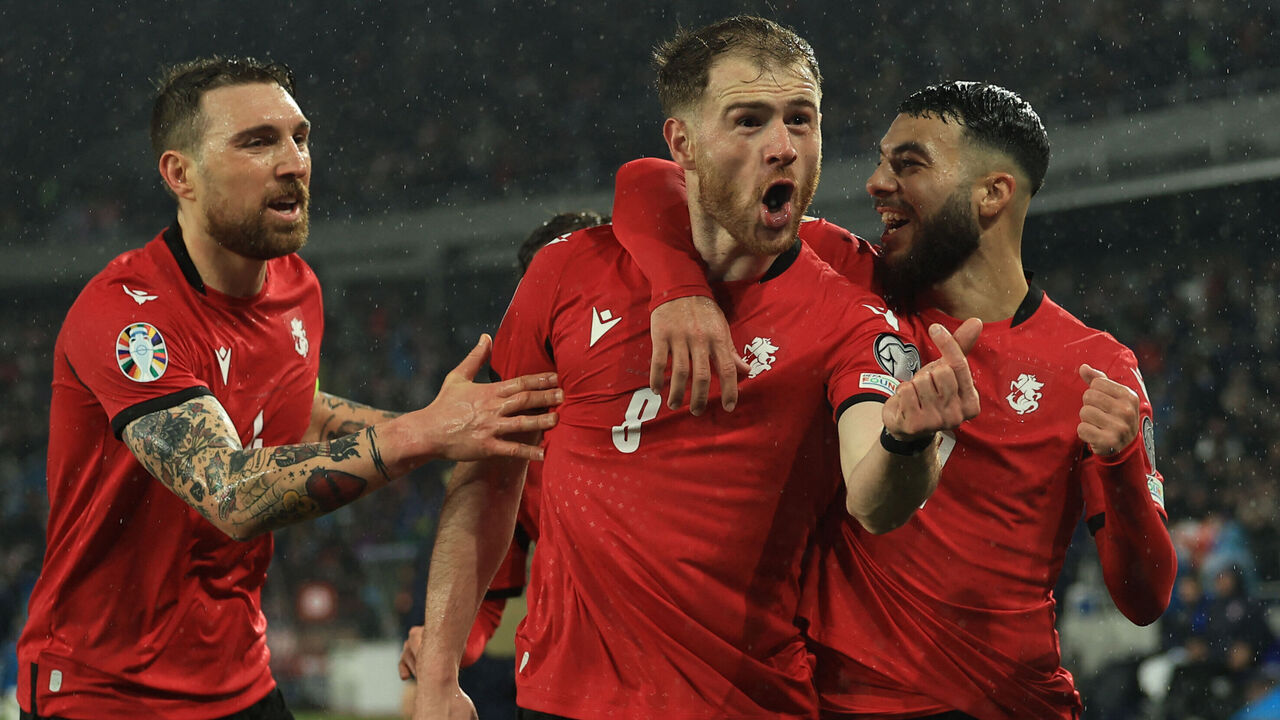
Georgia 2-0 Luxembourg
Two clever finishes from Budu Zivzivadze in Tbilisi assured Georgia of a place in Path C’s final – and all without the help of suspended talisman Khvicha Kvaratskhelia. But it wasn’t that simple for the host. Luxembourg thought it equalized during the second half, only for the goal to be eventually snatched away due to Maxime Chanot’s apparent foul 45 seconds earlier. Luxembourg’s Chanot was controversially sent off for denying a clear goal-scoring opportunity, and Zivzivadze effectively ended the match six minutes later with his second strike. Kvaratskhelia is available for the final.
Greece 5-0 Kazakhstan
Anastasios Bakasetas lashed home a penalty, Dimitrios Pelkas headed into the net’s roof, Fotis Ioannidis tapped in from close range, and Dimitrios Kourbelis added another header. And that was all before halftime. Kazakhstan’s impressive 2022-23 Nations League campaign and notable Euro 2024 qualifying wins over Denmark, Northern Ireland (twice), and Finland suddenly seemed ages ago, as Greece recorded its biggest halftime lead since October 1978 (5-0 against Finland). Aleksandr Marochkin’s embarrassing own goal in the 85th minute made Kazakhstan’s day even worse.
Playoff final: Georgia vs. Greece, Tuesday 1:00 p.m. ET
Copyright © 2024 Score Media Ventures Inc. All rights reserved. Certain content reproduced under license.
Premier League
Look: Nike unveils beautiful kit selection for Euro 2024, Copa America

Find the biggest stories from across the soccer world by visiting our Top Soccer News section and subscribing to push notifications.
Nike released a stunning batch of threads ahead of Euro 2024 and Copa America on Monday.
Days after Adidas launched its lineup for the summer’s top two tournaments, Nike followed suit with an array of colorful designs.
The U.S. manufacturer also announced redesigns for Canada and Poland, even though they’ve yet to qualify for their respective tournaments. The Canucks face Trinidad and Tobago in a one-off Copa America qualifier on Saturday, while Poland must navigate a four-team playoff to reach Euro 2024.
(All images courtesy of Nike)
Euro 2024
Croatia
Home

The square-shaped design that gives Croatia its unique look gets a slight upgrade. The home shirt features larger squares than ever before.
Away

Croatia’s away shirt plays on the national flag, with the traditional checkered pattern now on a slant.
England
Home

Influenced by England’s 1966 training gear, the home shirt has a classic feel with a rich blue collar and gorgeous trim along the cuffs.
Away

England embraces a deep purple hue for its away selection. The crest stands out with a contrasting off-white tint that makes the three lions pop.
France
Home

France’s home shirt may have the biggest crest of all of Nike’s offerings. The oversized rooster defines this shirt as much as the royal blue that’s made France’s kits a crowd-pleaser.
Away

The pinstripes mirror the colors of France’s national flag and span the width of the shirt in a simple, yet elegant design.
Netherlands
Home

Nike could’ve offered anything orange here, and it would’ve been perfect. But the Netherlands has something bolder and better to wear. The zig-zag pattern adds edge.
Away

The orange collar and cuffs pop alongside the three shades of blue Nike has chosen to create the abstract design on this work of art.
Poland
Home

Poland dedicates premium real estate on the country’s home shirt to its imposing crest.
Away

Poland’s away shirt is a daring choice. The graphic treatment adds texture, giving it a rugged feel while separating from the red tones of years past.
Portugal
Home

With possibly the best home shirt in Nike’s collection, Portugal leans heavily into its traditional red-and-green motif with a polo collar and thick cuffs. The logo sits prominently as well. A smash hit.
Away

Here’s another winner. Portugal’s away strip has a stunning textile imprint that gives off a cool summer vibe.
Turkey
Home

This is a menacing look. Turkey will look like a whirring red army with these imposing shirts.
Away

The classic red band returns to Turkey’s away uniform. Like the others, it features an oversized crest in the middle of the shirt.
Copa America
Brazil
Home

Nike goes big with Brazil’s crest and adds an intricate design to the same yellow hue the Selecao have used for decades.
Away

Brazil’s secondary strip feels like the beach. A horizontal wavy pattern covering the entire shirt mimics the country’s picturesque coastline.
Canada
Home

The only blemish in Nike’s lineup. Why is there a circle around the swoosh? And why are the shoulders so much darker than the body? None of it makes sense.
Away

The 13 pinstripes are supposed to represent the 10 provinces and three territories that make up Canada. Unfortunately, the rest of the shirt looks incomplete.
United States
Home

The United States men’s national team gets a classic home shirt with patriotic detailing along the color and sleeves.
Away

The gradient works perfectly with the red shorts the U.S. will wear at the Copa America.
Copyright © 2024 Score Media Ventures Inc. All rights reserved. Certain content reproduced under license.

Breaking down thrilling EPL title race with 10 games left

Euro 2024 playoffs: Miraculous Ukraine comeback, big result for Wales

Managerial merry-go-round: Predicting hires for marquee jobs

The Champions League's best XI so far

Ready Newest Trainer in Bundesliga History, retire SOLSKYER.

35 stars who will define the summer transfer window
Trending
-

 Champions League7 years ago
Champions League7 years agoThe Champions League's best XI so far
-

 Sports6 years ago
Sports6 years agoReady Newest Trainer in Bundesliga History, retire SOLSKYER.
-

 Serie A7 years ago
Serie A7 years ago35 stars who will define the summer transfer window
-

 Serie A7 years ago
Serie A7 years agoAjax show Juventus that winning requires more than individual quality
-

 Uncategorized5 years ago
Uncategorized5 years agoIFFHS publishes the list of top scorers in football history – Romario first, Ronaldo third
-

 Premier League7 years ago
Premier League7 years agoTransfer grades: Assessing Hazard’s move to Real Madrid
-

 Sports6 years ago
Sports6 years agoWenger: Hazard can’t replace Ronaldo.
-

 La Liga2 years ago
La Liga2 years agoLook: Adidas drops huge collection of new kits for Euro 2024, Copa America

